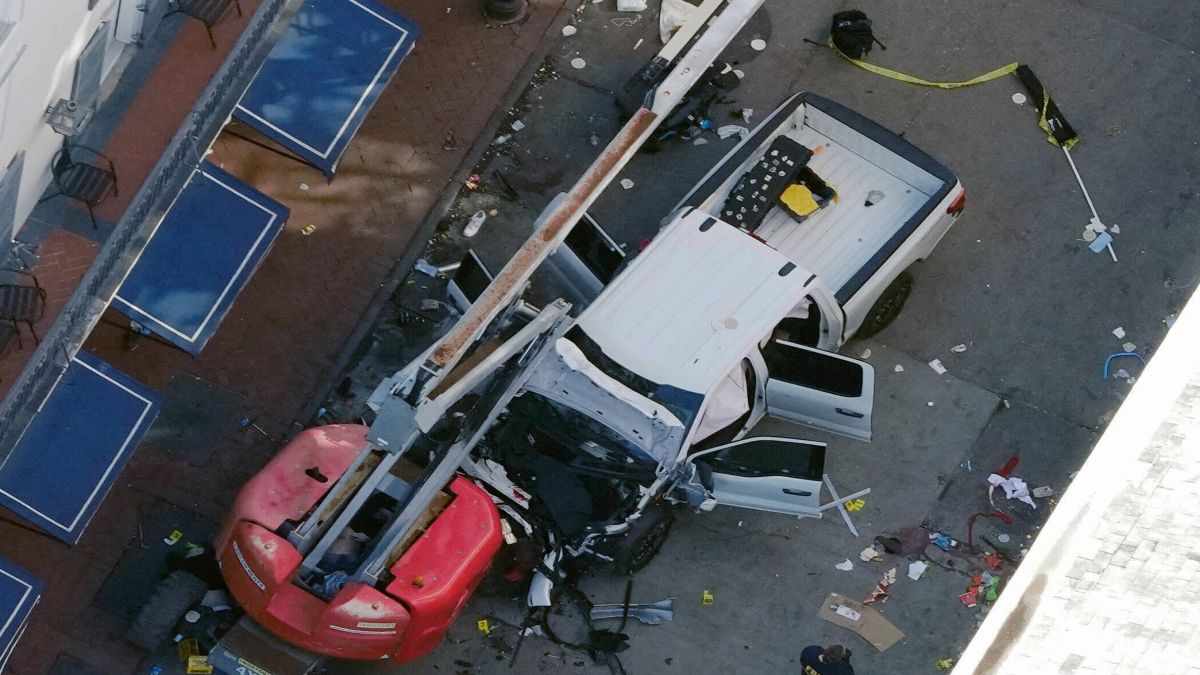While the Islamic State is struggling to survive in West Asia, the devastating New Year’s Day attack in New Orleans indicates that its horror remains prevalent in the West. A 42-year-old man named Shamsud-Din Bahar rammed his vehicle into a crowd on Bourbon Street killing 14 people. The authorities later revealed that an ISIS flag was in his car, reflecting the US veteran’s active connection to the radical terrorist group.
The group has been notorious for circulating online videos on different social media platforms, to influence people around the world and recruit the vulnerable. “Terrorism is essentially communications,” said Hans-Jakob Schindler, a former United Nations diplomat who is the senior director of the Counter Extremism Project, a think tank with offices in New York and Berlin.
“It is not warfare, because obviously, ISIS cannot militarily defeat the West, right? They tried and it didn’t exactly end well," he added during his conversation with The New York Times.
How the Islamic State is influencing people in the modern world
It is pertinent to note that the radical group has chapters in Afghanistan, Somalia, Mali, the Democratic Republic of Congo, the Caucuses and Turkey, among other places. This global franchise is united by ISIS’s sophisticated media operations. The terror group is known for putting out an online weekly newsletter called Al Naba, or The News, which contains details of the group’s latest exploits and encourages followers to commit violence.
“The Al Naba newsletter comes out like clockwork every Thursday, which is one of the more impressive things that the group is able to do,” Cole Bunzel, a scholar of militant Islam in the Middle East at the Hoover Institution at Stanford University told The New York Times. “They have an editorial; they cover the different provinces, as they’re called; they cover attacks from that week. They tally up the number of attacks and casualties that they claim. And that’s the main way that they stay connected with their global support base,” he added.
It is important to note that the most recent edition of the newsletter was published on January 2 and it did not mention the New Orleans attack. The Islamic State is yet to claim responsibility for the deadly attacks. According to several experts, Al Naba was initially published through platforms like Telegram, but the terror group always looks for other channels if one door closes.
Impact Shorts
More ShortsMeanwhile, the supporters of the group often use social media platforms like X, formerly known as Twitter and Facebook to decimate information. Hence, experts believe that the Islamic State’s mastery of media and message is a key to its success.
The radicalisation of the supporters
In January 2024, ISIS revived a campaign encouraging its supporters to “kill them wherever you find them,” a reference to a verse in the Quran.
According to The New York Times, the idea first surfaced in 2015 and was pushed to encourage followers to commit violent crimes in their homes rather than travelling to the Middle East. The rise of social networking platforms makes it easier for the group to spread such radical messaging.
“Terror groups don’t have to make a ton of effort to radicalize people anymore; the algorithm does it for them,” Schindler told NYT. “The point of the algorithm is to keep the user on the platform, to give them what they like, and if this happens to be Islamic extremism or if you are in the radicalization process, your worldview shifts,” he added.
The campaign is one of the major reasons why we see the supporters of the groups orchestrating attacks around the world. The complex network of ISIS also makes it difficult for law enforcement officials to track down the main culprit.
While ISIS infiltrates the West it is struggling to survive in West Asia
While the group maintained prominence around the world it struggled to find relevance in West Asia. In Syria, the Islamic State took advantage of a long civil war to seize a large swath of territory. The terror group eventually lost the conquered land to US-backed fighters.
However, many now fear that ISIS could take advantage of the power vacuum created following the ousting of Syrian President Bashar al-Assad. Many fear that the Islamic State could regain ground amid the chaos. While ISIS had spoken dismissively of Hayat Tahrir al-Sham (the rebel group that led the Syrian takeover) as “jihadists turned politicians,” it has not called for attacks on them.
Meanwhile, Hayat Tahrir al-Sham and other rebel groups pledged to distance themselves from ISIS and take over the role of guarding Islamic State prisoners in eastern Syria. The job was initially done by the Kurdish-led Syrian Defense Force, which was backed by the United States, for nearly five years. Many are now questioning whether HTS will be able to curb the rise of ISIS in Syria, a group to which it had links in the past.
Amid the chaos, ISIS recently renewed its “Breaking the Walls” media campaign, which encourages the imprisoned fighters to break out of the jails in eastern Syria and free their families. If they succeed in doing so, it would be disastrous, not only for Syria but for the world.


)

)
)
)
)
)
)
)
)



